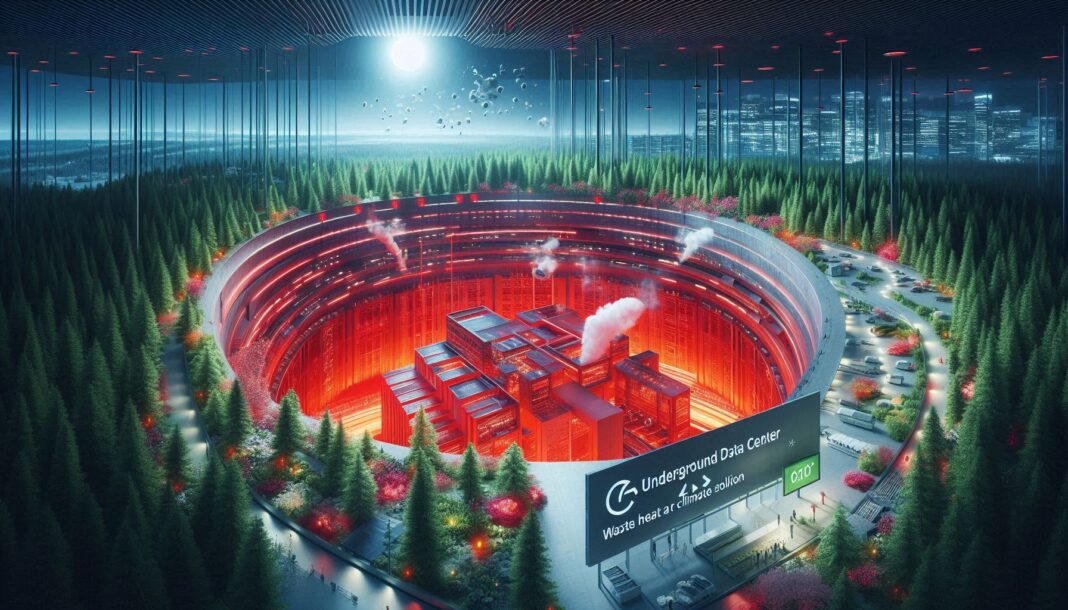Finland is pioneering a clean-energy breakthrough by channeling waste heat from data centers into district heating networks, warming thousands of homes while cutting emissions. With projects like Microsoft’s massive heat-recovery cluster near Helsinki, the Nordics are showcasing how digital infrastructure can support sustainability—though critics argue data centers remain energy-intensive and far from fully green.

Finland has long been recognised for its ability to innovate in the face of challenging natural conditions, but one of its latest climate solutions is turning heads far beyond the Nordic region. In a country where winter temperatures can plunge well below freezing, the idea that your next warm shower could be powered by the waste heat of a data center sounds almost futuristic. Yet this is precisely what is happening as Finland pioneers a model of digital infrastructure that doubles as a renewable-style heat source, feeding the excess warmth generated by servers into vast district heating networks that warm homes, businesses, and public buildings.
At the heart of this development is a growing awareness of the environmental impact of data centers—massive facilities filled with servers that power cloud computing, streaming platforms, social networks, and the AI applications that increasingly define modern life. These centers are energy-intensive and generate a tremendous amount of heat as a byproduct of their operations. Traditionally, that heat has been allowed to dissipate into the air or has required additional energy for cooling systems to manage it. But in the chilly Nordics, engineers and urban planners saw an opportunity to turn this waste into a valuable resource.
Finland and neighbouring Sweden are now leading the global push to pair data centers with district heating systems. These countries have long had well-developed networks of underground pipes that distribute hot water for heating—a model far less common in warmer regions. By connecting data centers to these systems, the excess heat they produce can be captured, transferred, upgraded, and redistributed across entire towns. The result is a hybrid model where digital infrastructure supports everyday living, reducing carbon emissions while ensuring homes remain warm even during the harshest months.
A striking example can be found in the Finnish town of Mantsala. Here, a 75-megawatt data center has become a crucial part of the community’s energy ecosystem, providing enough heat to cover two-thirds of all homes in the area. Rather than being seen as an energy-consuming liability, the data center has become an unexpected partner in the town’s sustainability journey. Local residents can trace the warmth of their radiators or showers directly back to the humming servers processing information for companies worldwide. It is a circular system that makes full use of energy that would otherwise have been wasted.
Finland’s ambition does not stop at small-town integration. Near Helsinki, Microsoft is constructing what is expected to become the world’s largest heat-recovery data center cluster—a project that underscores how seriously the tech giant is taking the region’s potential. Once completed, the facility will supply 40% of the heating needs of nearby Espoo, equating to warmth for roughly 100,000 homes. The scale of this operation could set a new global benchmark for data center sustainability, proving that these digital facilities—so often criticized for their environmental cost—can play a more balanced role in the energy landscape.
The technology behind this heat reuse system is complex but efficient. First, the data centers produce low-temperature warm water as a result of cooling servers. This water is then captured and circulated through industrial heat pumps and electric boilers, which boost the temperature to levels suitable for heating purposes. After that, the heated water is fed into the district heating pipelines, joining energy sources such as geothermal systems, biomass, or waste-to-energy plants. The entire loop helps reduce dependence on fossil fuels in a region where heating represents a major share of total energy consumption.
Though promising, experts caution against viewing heat recovery as a comprehensive sustainability solution. While it unquestionably reduces the carbon footprint of data centers, it does not eliminate it. Data centers remain enormous consumers of electricity, and as the digital economy expands—fueled especially by AI and data-intensive technologies—global demand for electricity from this sector is expected to double by 2030. Even in Finland and Sweden, where much of the grid is powered by renewables, data centers still require massive amounts of land, water, and energy for operations and cooling. Critics argue that the benefits of heat recovery do not erase these broader concerns.
This has led policymakers to re-evaluate how data center investments should be incentivized. For years, governments across Europe offered tax breaks or subsidies to attract tech giants, hoping to position their regions as digital hubs. Now, with public scrutiny rising, many leaders question whether the jobs and economic activity these facilities bring justify their environmental cost. Data centers often employ relatively few people, despite their large footprints and high energy needs. Heat reuse helps make them less harmful, but not necessarily transformative from a sustainability standpoint. As a result, some Nordic municipalities have tightened regulations or demanded that companies demonstrate clearer community benefits before receiving favourable terms.
Still, the momentum behind heat recovery suggests that this model will continue to grow—especially in regions already equipped with district heating systems. The Nordics are uniquely positioned: they combine cold climates that make cooling servers easier and more energy-efficient with a grid powered largely by renewables like hydropower, wind, and nuclear energy. This creates a rare synergy between the needs of digital infrastructure and sustainable urban planning, allowing data centers to fit more comfortably within national carbon reduction targets.
Globally, as governments seek to balance digital expansion with climate commitments, Finland’s approach offers a practical blueprint. Rather than treating data centers solely as energy-intensive necessities, the country positions them as potential contributors to local energy resilience. The model demonstrates that technological growth and environmental responsibility do not have to be mutually exclusive, though it requires careful planning, investment, and realistic expectations. Heat recovery will not make data centers fully green, but it can make them significantly less wasteful.
As cloud services, artificial intelligence, and digital communication networks continue to scale up, the question of how to manage their environmental impact will only become more urgent. The Nordic experiment with heat recycling shows that innovative thinking can uncover opportunities where challenges once dominated. For Finland, the simple act of turning server heat into home heating represents a breakthrough in reimagining the intersection between the digital and physical worlds. It serves as a reminder that sustainability often lies not in eliminating modern infrastructure, but in designing smarter ways to integrate it into daily life.
In the months and years ahead, it is likely that more countries will look to Finland’s example as they grapple with the growing carbon footprint of the digital age. Whether such systems can be replicated elsewhere will depend on geography, climate, and political will. But for now, in towns like Mantsala and cities like Espoo, the warmth flowing from data centers into homes is a tangible sign of a future where technology not only consumes energy but gives some of it back.







